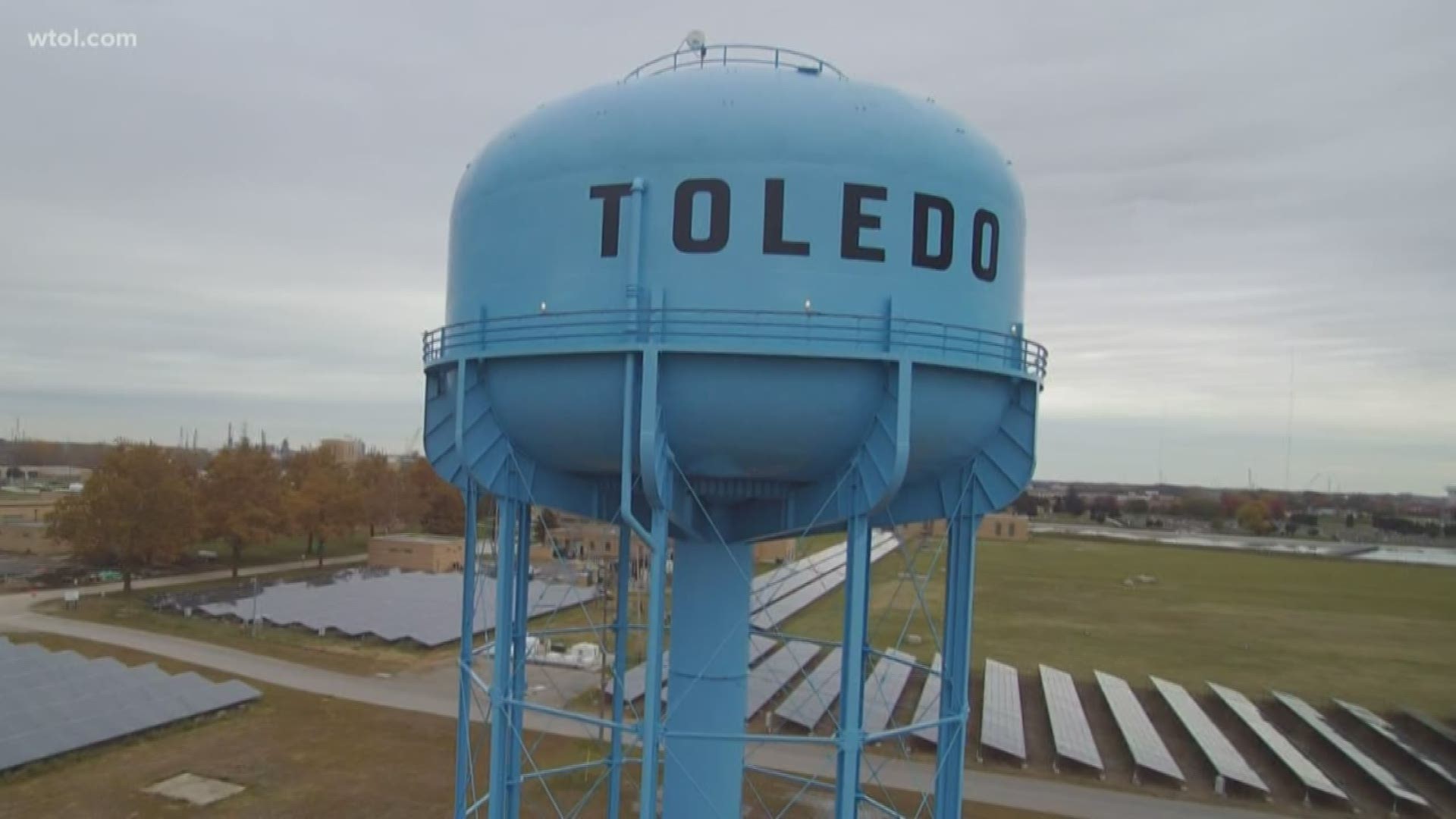TOLEDO, Ohio — The city of Toledo announced Friday that they will begin daily testing of the drinking water. This is a precautionary effort that is being done as the algae concentration intensifies. While the lake water has algae, officials said your drinking water is safe.
It may feel like it takes just a few steps to get water in your home, but in reality, the process is much more drawn out.
THE PROCESS
First, the water is brought in about three miles off shore in Lake Erie at the Toledo water intake. At the intake, water is treated with potassium permanganate which removes iron and hydrogen sulfide.
From there, the water travels through pipes to the low service pump station. While there, power activated carbon is added before it heads to the Collins Park Water Treatment Plant.
The treatment plant is where most of the work happens. First, alum is added, which binds particles together helping to remove toxins. After that, a number of other chemicals are added (soda ash, powdered activated carbon, phosphate, chlorine dioxide, chlorine and fluoride) which help soften, remove odor, improve the taste, disinfect and clean the water. Still in the water treatment plant, water is filtered and goes into a 70 million-gallon holding tank underground where it sits for several hours.
After sitting in the reservoir, the treated water moves to the high service pumps. They work to send the water to pipes that lead to your home, businesses and more.
This process is complex and lengthy, taking about a day and a half from the lake to your faucet.
Toledo's Mayor Wade Kapszukiewicz said you can trust that the process works.
"The citizens of Toledo have invested in this plant,” Mayor Kapszukiewicz said. “So that while the water that is in here come from a source that agricultural interests have polluted for us, by the time it comes out and ends up in your faucet it's as good of water as you will find anywhere in this country."
LOOKING TOWARD THE FUTURE
Mayor Kapszukiewicz said that together, there have been half a billion dollars worth of improvements at the Collins Park Water Treatment Plant. Some of those improvements are still being installed like Ozone, which is an oxidant that essentially vaporizes organic material from the water further protecting it and you.

